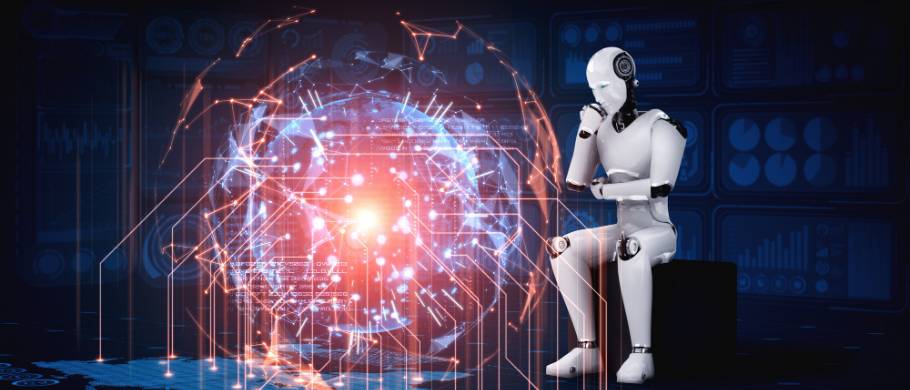In the dynamic landscape of Information Technology (IT), the integration of Artificial Intelligence (AI) has revolutionized how organizations operate and innovate. While AI brings unprecedented efficiency and capabilities to the table, the question of balance between AI and human collaboration looms large. Striking the right equilibrium is essential for harnessing the full potential of these technologies while preserving the unique strengths that human professionals bring to the IT domain.
- The Rise of AI in IT: The IT sector has witnessed a remarkable surge in the adoption of AI technologies. From automating routine tasks to optimizing complex processes, AI has proven its mettle in enhancing productivity and decision-making. Machine learning algorithms, natural language processing, and advanced analytics have become integral components of IT infrastructure, leading to increased efficiency and cost-effectiveness.
- The Power of Human Expertise: While AI offers unprecedented speed and accuracy, it lacks the nuanced understanding, creativity, and emotional intelligence inherent in human professionals. Human expertise is irreplaceable when it comes to complex problem-solving, critical thinking, and the ability to adapt to unforeseen challenges. Moreover, human professionals bring ethical considerations, empathy, and a holistic perspective that AI lacks.
- Finding the Right Balance: Achieving synergy between AI and human collaboration is crucial for optimizing outcomes in IT. Rather than viewing AI as a replacement for human workers, organizations should embrace it as a powerful tool that complements human skills. This requires a strategic approach that leverages the strengths of both AI and humans.
1.Task Allocation and Specialization:
- Identify tasks where AI excels in speed and precision.
- Allocate routine and repetitive tasks to AI systems.
- Allow human professionals to focus on creative problem-solving, strategy, and complex decision-making.
2. Continuous Learning and Upskilling:
- Foster a culture of continuous learning to keep human professionals abreast of AI advancements.
- Provide training programs to help them acquire skills that complement AI technologies.
- Encourage interdisciplinary collaboration to promote cross-functional expertise.
3. Ethical Considerations and Oversight:
- Establish ethical guidelines and frameworks for AI applications.
- Human professionals play a crucial role in ensuring AI systems adhere to ethical standards.
- Maintain human oversight to address ethical concerns and prevent unintended consequences.
4. Collaborative Decision-Making:
- Facilitate collaboration between AI systems and human experts in decision-making processes.
- Foster an environment where AI suggestions are considered alongside human insights.
- Encourage open communication to integrate diverse perspectives.
Conclusion:
In the ever-evolving landscape of IT, the collaboration between AI and human professionals is not just a choice but a necessity. Striking the right balance requires thoughtful consideration, continuous adaptation, and a commitment to leveraging the strengths of both AI and humans. By fostering a harmonious collaboration, organizations can unlock the full potential of technology while preserving the unique qualities that make human professionals indispensable in the IT realm.
Unique Systems Skills LLC offer IT training, Staffing & Consulting services. Please contact us more information on Java classes offered by us call 1-844-887-9239, email training_usa@systemskills.com

